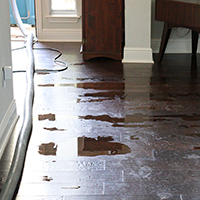Exactly how to Prevent a Water Damaged Bathroom
Exactly how to Prevent a Water Damaged Bathroom
Blog Article
We have come across this great article pertaining to Common Causes of Water Damage in a Bathroom directly below on the web and thought it made perfect sense to relate it with you on this site.

The shower room is very susceptible for damp accumulation and potential water damage due to the constant use water in it. This write-up supplies straightforward assessment methods to assist spotting water damage hazards.
The constant use water in the shower room makes it very prone for damp accumulation and possible water damages. By checking it frequently, you can decrease water related problems.
The adhering to collection of evaluations is very easy to execute as well as ought to be done once in every 3 months in order to maintain your restroom in good shape and also to avoid prospective water damages brought on by the tub, the shower, pipe joints and also plumbing, sinks, closets, as well as the toilet
Do not forget doing these evaluations and also be complete while doing them. Keep in mind that these easy examinations can conserve you a lot of cash by supplying early signs for water damage
Sinks and also Cabinets
Sinks as well as cabinets are revealed to wetness and moisture daily and also are typically overlooked. Check routinely under the sink and also on the counter top over it. Repair any drip in the catch as it may recommend drain issues. Look around the sink, slow-moving draining pipes might indicate an obstructed drain. Replace sink seals if they are fractured or loose.
Bath tub and Shower
The shower and also bathtub need special interest and also maintenance. Examine the tiles and also replace if split. Make sure that there is no missing out on cement between the floor tiles. Inspect as well as change broken caulking at joints where the wall surfaces meet the flooring or the bath tub. Clogged drains pipes and pipes troubles will avoid the bath tub from drying as well as might indicate severe troubles beneath the tub. Seek advice from a professional right away to stop structural damage. Focus on stainings or soft areas around the tub wall surfaces as they may indicate an interior leakage.
Plumbing
Signs for water damage are hard to discover given that the majority of pipes are set up inside the wall surfaces.
Pay unique attention to flooring as well as wall surfaces dampness and stains as they may suggest an unseen plumbing problem. Check wetness degrees in adjacent areas too.
The Toilet
The toilet is a susceptible water joint. Examine the water lines and also look for leaks around the toilet seat, in the hose pipe, as well as under the water storage tank. If you find any kind of indicators of moisture on the floor around the toilet, check for leaks in the toilet rim as well as storage tank seals.
Know that hanging commode dish antiperspirants raises the opportunities for obstructions.
TIPS TO PREVENT WATER DAMAGE IN THE BATHROOM
The average household uses approximately 80-100 gallons of water per person per day. For a family of 4, that's almost 2,500 gallons of water a week! The largest portion of this consumption comes from bathroom use. Flushing the toilet uses the most water, followed by taking a shower or bath. With that much water running through the home, water damage in the bathroom is bound to happen. Knowing how to spot signs of a water leak is essential to preventing long-term damage. This guide provides you with tips to reduce the impact of water damage on your bathroom.
CAUSES OF BATHROOM WATER DAMAGE
Pipe breaks are the most common cause of water damage we see in our daily jobs. The age of a pipe plays a large role in a pipe break as well as corrosion. Over time, the metal begins to break down, allowing water to escape. Frozen pipe breaks are also a concern in the winter months. Toilet overflows caused by paper products or children flushing inappropriate items. Degraded caulking around the toilet or bathtub can allow water seepage, sometimes behind the fixture, into the subfloor or walls. Condensation forms when the water in a pipe is cooler than the air temperature. Beads of water form on the exterior of the pipes, sometimes so much so that the water begins to drip and pool below. Sink or shower backups created by poor drainage. HOW TO PREVENT WATER DAMAGE IN YOUR BATHROOM
Inspect your toilet supply line for worn or frayed hoses and replace them as needed. Winterize your plumbing to prevent a frozen pipe break. Use vent fans to prevent condensation that can lead to mold growth. Routinely check and replace degraded caulking around your toilet or bathtub. Increase the temperature in your toilet tank and insulate your pipes during the warm summer months to keep condensation from forming. Use child safety locks on the toilets. Flush only toilet paper. "Flushable" wet wipes are actually not good for your plumbing system. Additionally, feminine hygiene products should not be flushed. Prevent water from escaping the tub or shower. Make sure shower curtains are in good condition. Inspect shower doors and replace the seal strip if necessary. Wipe up any water that accumulates on the floor and use bath mats. Water left to sit can cause damage to the tiles and flooring. Refrain from using bath products containing heavy oils to avoid a clogged drain.

I'm certainly very fascinated with Common Causes of Water Damage in a Bathroom and I'm hoping you liked the new piece. Appreciated our post? Please share it. Help another person find it. Many thanks for your time. Come back soon.
Free Quote Report this page